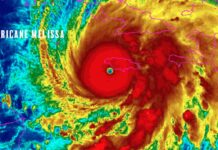

Macron unaware how IPCC has deceived the world
By Dr. Tim Ball and Tom Harris
OTTAWA – OPINION – On Wednesday, French President Emmanuel Macron told the United Nations Climate Change Conference in Bonn, Germany, that France would cover the cost of U.S. donations to the Intergovernmental Panel on Climate Change (IPCC) that President Donald Trump has vowed to cancel.
Macron demonstrated that he does not understand the true nature of the IPCC when he told the conference, “We need scientific information that is constantly nourished to ensure clear decision making. The IPCC is one of the major components of this work.”
The IPCC has never been a valid source of scientific information. Each and every prediction made by the computer models cited by the IPCC has turned out to be wrong.
A simple definition of science is the ability to predict. If the prediction is wrong, the science is wrong. American Nobel Prize-winning physicist Richard P. Feynman said, “It doesn’t matter how beautiful your theory is… If it doesn’t agree with experiment, it’s wrong.”
So, the IPCC is not actually practicing science when they make their forecasts. It is pseudo-science for a political agenda. Here’s what happened.
To make its forecasts, the IPCC relies on computerized models built on data and formulae to represent atmospheric conditions. Besides the fact that we lack a comprehensive ‘theory of climate,’ and so do not have valid formulae to properly represent how the atmosphere functions, we also lack the data to properly understand what weather was like over most of the planet even in the recent past. And, without a good understanding of past weather conditions, we have no way to know the history of its average condition—the climate. Meaningful forecasts of future climate change are therefore impossible.
An important data set used by the computer models cited by the IPCC is the ‘HadCRUT4’ global average temperature history for the past 167 years produced by the Climatic Research Unit at the University of East Anglia, and the Hadley Centre, both based in the United Kingdom.
Until the 1960s, HadCRUT4 temperature data was collected using mercury thermometers located at weather stations situated mostly in the United States, Japan, the UK, and eastern Australia. Most of the rest of the planet had very few temperature sensing stations. And none of the Earth’s oceans, which cover 70% of the planet, had more than the occasional station separated from its neighbor by thousands of kilometers.
The data collected at weather stations in this sparse grid had, at best, an accuracy of +/-0.5 degrees Celsius, oftentimes no better than +/-1 degree. Averaging such poor data in an attempt to determine global conditions cannot yield anything meaningful.
Modern weather station surface temperature data is now collected using precision thermocouples. But, starting in the 1970s, less and less ground surface temperature data was used for plots such as HadCRUT4. This was done initially because governments believed that satellite monitoring could take over from most of the ground surface data collection. But the satellites did not show the warming forecast by computer models. So, bureaucrats closed most of the colder rural surface temperature sensing stations, thereby yielding the warming desired for political purposes.
Today, there is virtually no data for approximately 85% of the Earth’s surface. Indeed, there are fewer weather stations in operation now than there were in 1960.
So, the HadCRUT4 and other surface temperature computations after about 1980 are meaningless. Combining this with the problems with the early data, and the fact that we have almost no long-term data above the surface, the conclusion is unavoidable: it is not possible to know how the Earth’s climate has varied over the past century and a half. The data is therefore useless for input to the computer models that form the basis of the IPCC’s conclusions.
In fact, there is insufficient data of any kind—temperature, land and sea ice, glaciers, sea level, extreme weather, ocean pH, etc.—to be able to determine how today’s climate differs from the past. So, the IPCC’s climate forecasts have no connection with the real world.
Trump is right to try to end U.S. financing of the IPCC. Other nations should follow his lead.
Dr. Tim Ball is an environmental consultant and former climatology professor at the University of Winnipeg in Manitoba. Tom Harris is executive director of the Ottawa, Canada-based International Climate Science Coalition.
The views, opinions, and positions expressed by all columnists and contributors are the author’s alone. They do not inherently or expressly reflect the views, opinions and/or positions of NetNewsLedger.






